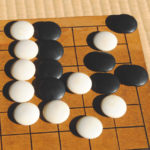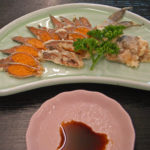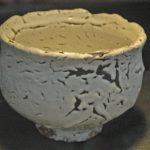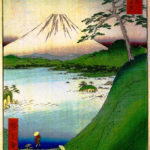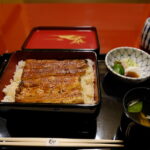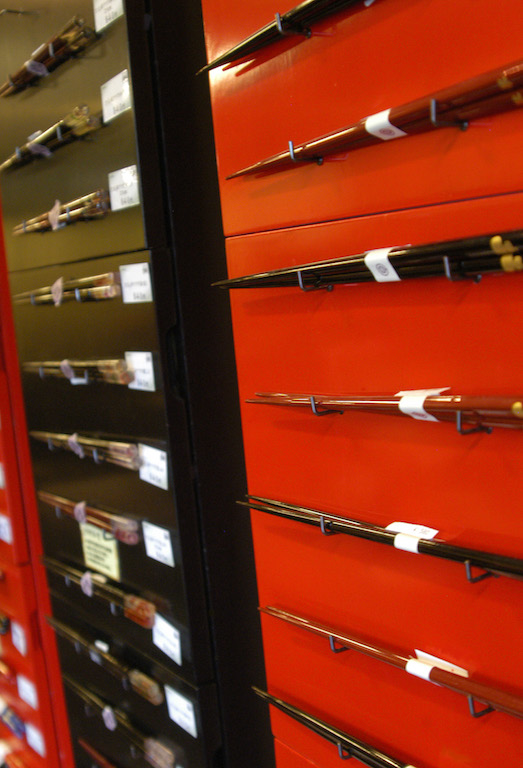
Handsome lacquered pairs of chopsticks await purchasers in a store that specializes in the implements.
DAVID CAPEL
As they ruefully surveyed the morsel that had just escaped their grasp and was currently occupying an unintended location on the table before them, back in the days before Japan’s cuisine assumed global proportions more than a few Western visitors to this country may have mused whether the institution of chopsticks might not be part of some fiendish cultural plot. But now in an age when we have all become much more internationalized, admitting an inability to use chopsticks is perhaps akin to confessing that one cannot floss one’s own teeth. Thus, some of the mystery has gone from what is arguably the most elegant way yet devised of inserting comestibles into the requisite spot.
As might be supposed, chopsticks were invented by the Chinese, who developed a fondness for graceful one-handed eating well over 3,000 years ago. The Japanese took up the practice after they strongly came under the cultural sway of their imperial western neighbor from around the fifth century. At first, it was only the nobility who adopted the dainty dining style. It was not until the late eighth century that the hoi polloi became convinced that chopsticks offered a better eating option than fingers.
Unlike Chinese chopsticks, which are rounded at the ends where they come into contact with the food, Japanese chopsticks are distinctly tapered and have pointed ends. They are also around 4 centimeters shorter than their Chinese counterparts, with Japanese women’s chopsticks being shorter still than those of men.
Though for many people, lacquered wood may be the type of choice for a good pair of chopsticks, various materials in Japan go and have gone into making the instruments. Ivory, bone, various metals, plastic and bamboo have been variously used in addition to the common material of wood. Back in the feudal era, the more ostentatious sort of aristocrat considered gold and silver rather apt for their chopsticks. The latter metal did, however, confer benefits beyond flamboyance. Silver was believed to become tarnished if it came into contact with poisoned food, and that was no inappropriate function for an eating utensil in the dog-eat-dog era of bitter struggles for power before Japan achieved unification towards the end of the sixteenth century.
Since chopsticks are grasping instruments, their use extends beyond the simple business of delivering food to the mouth. The long kitchen chopsticks known as saibashi come in various sizes, are usually made of bamboo and are the indispensable precision tools that allow Japanese chefs to lend incomparable aesthetic appeal to their creations. The metallic hibashi chopsticks are employed in the more traditional kind of household for moving around pieces of charcoal in the movable charcoal heater known as the hibachi. Less inauspiciously, chopsticks also figure in funerary rites when, after cremation, bones of the recently departed are picked out from among the ash. Family members pass bones of the deceased to each other with chopsticks, which is the only time in Japan when it is socially permissible for more than one person to have a hands-on grasp of an item with the implements.
Back in the realm of eating, for those dining out, the disposable wooden waribashi are the chopsticks that are most likely to be encountered in a restaurant. Usually served in a small paper envelope, waribashi are made as a pair in a single piece, joined at one end, so that they can be easily pulled apart into separate sticks at the time of use. Those with environmental concerns, however, tend to frown on waribashi since they do amount to an awful lot of wasted wood.
The extraordinary grace that chopsticks possess was well captured by the French philosopher and semiotician Roland Barthes in his Empire of Signs book about Japanese culture, which he wrote after a visit to the land. In the use of the implements, Barthes recognized “something maternal, the same precisely measured care taken in moving a child . . . chopsticks are the converse of our knife (and its predatory substitute, the fork) . . . food no longer becomes a prey to which one does violence . . . but a substance harmoniously transferred.”
David Capel is a journalist living in Tokyo.

